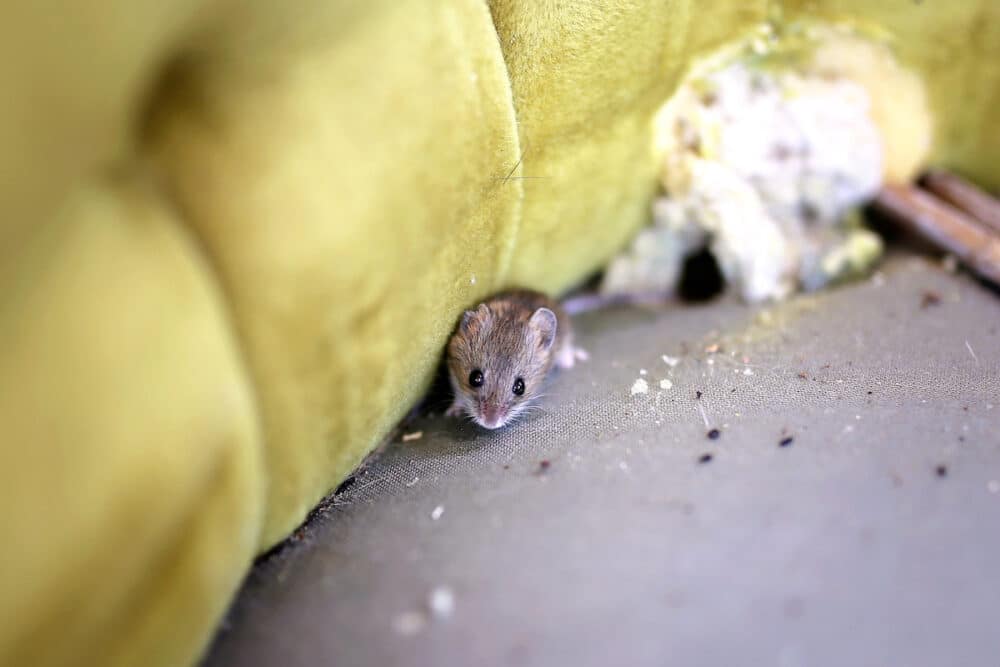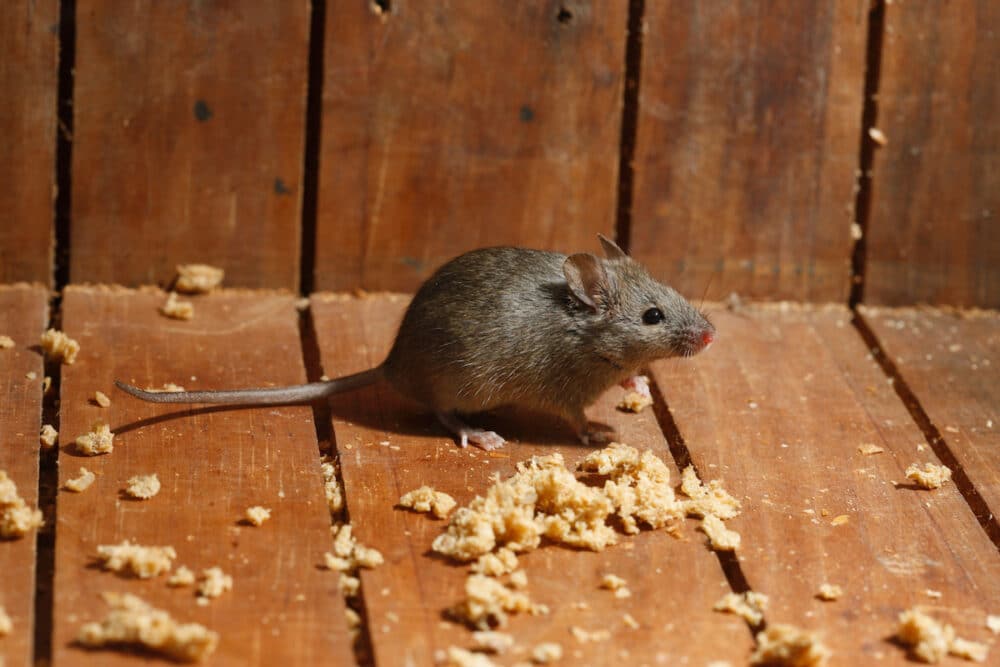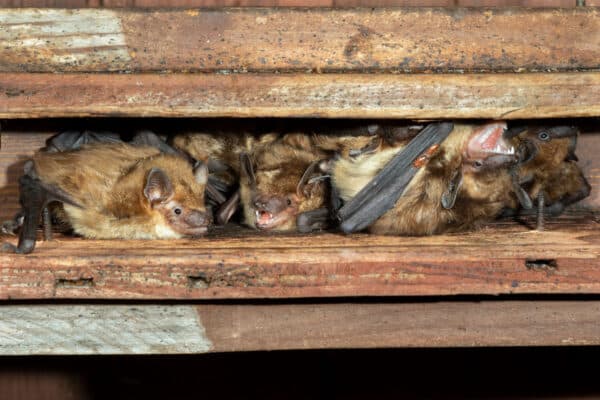
Dealing with a mouse infestation can be a frustrating and challenging experience for homeowners. These small rodents are known for their ability to squeeze through tiny openings and evade capture, making them difficult to control once they’ve infiltrated your home.
However, with the right strategies and techniques, you can effectively catch and eliminate mice from your property. In this blog, we’ll share our best tips for catching mice and regaining control of your living space.
Dangers of Mice in Your Home or Business
Mice may seem small and harmless, but the presence of these rodents in your home or business can pose significant dangers to both property and health. Understanding the potential risks associated with a mouse infestation is essential for taking proactive steps to address the problem effectively.
Here are some of the dangers of mice in your home or business:
1. Property Damage
Mice have a voracious appetite and a tendency to gnaw on objects to wear down their constantly growing teeth. As a result, they can cause extensive damage to property, including wooden furniture, electrical wiring, insulation, and food packaging. Chewed wires can create fire hazards, while structural damage caused by gnawing can compromise the integrity of buildings.
2. Contamination
Mice are known carriers of various pathogens, bacteria, and parasites that can contaminate surfaces, food, and water sources. Their feces, urine, and saliva can transmit diseases and pose significant health risks to humans and pets, such as:
- Salmonellosis
- Leptospirosis
- Hantavirus
- Lymphocytic Choriomeningitis (LCM)
3. Allergies and Asthma
Mice can trigger allergic reactions and exacerbate asthma symptoms in sensitive individuals. The proteins found in mouse urine, saliva, and dander can become airborne and cause respiratory issues when inhaled. Prolonged exposure to mouse allergens can lead to chronic respiratory problems and other health complications.
4. Food Contamination
Mice are notorious for raiding food storage areas and contaminating food with their feces, urine, and saliva. Consuming food that has been contaminated by mice can lead to food poisoning and gastrointestinal illnesses. Additionally, the presence of mice in food preparation areas can result in violations of health and safety regulations for businesses.
5. Structural Damage
In addition to gnawing on objects, mice also build nests using materials like shredded paper, fabric, and insulation. Their nesting activities can lead to damage to walls, ceilings, and floors, as well as insulation and electrical wiring. Over time, this can weaken the structural integrity of buildings and necessitate costly repairs.
6. Fire Hazards
Chewed electrical wiring poses a significant fire hazard in homes and businesses. Mice have a habit of gnawing on wires to sharpen their teeth or access nesting materials, which can expose the underlying conductive material and create a risk of electrical shorts, sparks, and fires.
7. Odors and Unpleasantness
The presence of mice can result in unpleasant odors due to the accumulation of urine, feces, and decaying rodents. These odors can permeate living and working spaces, creating a discomforting and unsanitary environment for occupants.

Spotting Mice in Your Home or Business
Here are several ways to identify the presence of mice in a home or business:
Droppings
Mouse droppings are one of the most common signs of a mouse infestation. These small, dark pellets are typically found near food sources, along baseboards, in cupboards, and in other areas where mice frequent.
Gnaw Marks
Mice have a tendency to gnaw on objects to wear down their constantly growing teeth. Look for gnaw marks on food packaging, wooden furniture, electrical wiring, and other surfaces throughout your home or business.
Nesting Material
Mice often use materials like shredded paper, fabric, insulation, and other soft materials to build nests. Keep an eye out for these materials in hidden or secluded areas such as:
- Behind appliances
- Storage areas
- Attics
- Crawl spaces
Grease Marks
Mice have oily fur that can leave behind grease marks or smudges along walls, baseboards, and other surfaces as they navigate through your home or business.
Scratching Noises
Mice are nocturnal creatures and are often most active at night. Listen for scratching or scurrying noises coming from walls, ceilings, or floors, especially during the evening hours.
Chewed or Damaged Food Packaging
Mice are notorious for raiding food storage areas and can chew through cardboard, plastic, and other packaging materials to access food. Check for signs of chewed or damaged food packaging in your pantry, cabinets, and other storage areas.
Pet Behavior
Dogs and cats can sometimes detect the presence of mice before humans do. Watch for signs of heightened interest, such as sniffing, scratching, or pawing at walls, furniture, or other areas where mice may be present.
Tracks or Footprints
Mice leave behind tiny tracks or footprints in dusty or dirty areas. Look for these tracks along baseboards, in attics, and in other areas where mice may be active.
Unexplained Damage
If you notice unexplained damage to belongings or property, such as chewed wires, torn fabric, or holes in walls or flooring, it could be a sign of a mouse infestation.
Unpleasant Odors
In some cases, mouse infestations can produce unpleasant odors due to the presence of urine, feces, and decaying rodents. If you notice any unusual smells, particularly in hidden or enclosed spaces, it could indicate a mouse problem.
By being vigilant and proactive in identifying these signs, you can take prompt action to address a mouse infestation and prevent further damage to your home or business. If you suspect that you have a mouse problem, consider contacting a professional pest control service for assistance in effectively addressing the issue.
Tips for Catching Mice in Your Home or Business
1. Identify Entry Points
The first step in effectively catching mice is to identify the entry points they use to access your home. Mice can enter through openings as small as a dime, so it’s essential to thoroughly inspect your property for any gaps or cracks in the:
- Foundation
- Walls
- Windows
- Doors
Seal these entry points with caulk, steel wool, or other appropriate materials to prevent mice from re-entering your home once they’ve been removed.
2. Set Traps Strategically
Traps are one of the most effective tools for catching mice, but their placement is key to success. Place traps along walls and in areas where mice are known to travel, such as near:
- Food sources
- Nesting sites
- Along known mouse pathways
Use multiple traps, including snap traps, glue traps, and humane traps, to increase your chances of catching mice quickly and efficiently.
3. Choose the Right Bait
The success of your traps depends on the bait you use to attract mice. Common bait options include peanut butter, chocolate, bacon, and dried fruit. Experiment with different bait types to see which ones are most effective in your particular situation. Remember to check and replenish bait regularly to maintain the traps’ effectiveness.
4. Keep Things Clean and Tidy
Mice are attracted to food, water, and shelter, so keeping your home clean and tidy can help deter them from sticking around. Store food in airtight containers, clean up spills and crumbs promptly, and eliminate sources of standing water.
Decluttering your home and removing potential nesting sites, such as piles of paper or cardboard, can also make your property less appealing to mice.
5. Monitor and Maintain Traps
Once you’ve set traps, it’s essential to monitor them regularly and remove any captured mice promptly. Dead mice left in traps can attract other pests and create unpleasant odors. Reset traps as needed and continue to monitor for signs of mouse activity to ensure that your infestation is fully under control.
6. Consider Professional Assistance
If you’re dealing with a severe or persistent mouse infestation, or if your efforts to catch mice on your own have been unsuccessful, it may be time to consider professional assistance. Pest control professionals have the knowledge, experience, and resources to effectively eliminate mice from your property and prevent future infestations. They can also provide valuable advice on mouse-proofing your home and implementing long-term prevention strategies.

Reach Out to Covenant Wildlife For Help Catching Mice During an Infestation
If you’re struggling to catch mice in your home or if you’re dealing with a severe infestation that requires professional intervention, don’t hesitate to reach out to Covenant Wildlife for assistance. Our team of experienced pest control experts specializes in humane and effective mice infestation removal, helping homeowners reclaim their living spaces and enjoy peace of mind. Contact us today to learn more about our services and how we can help you eliminate mice from your property for good.
By following these tips and enlisting the help of professionals when needed, you can effectively catch mice and regain control of your home. Don’t let a mouse infestation disrupt your life – take action today to address the problem and enjoy a mouse-free living environment once again.




